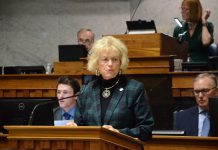ADAM MUELLER INDIANA CAPITAL CHRONICLE
Many hard-working Hoosiers will be in for sticker shock when they start shopping for next year’s health coverage in the individual marketplace. For the past several years, thousands of Hoosiers have been able to afford coverage thanks to a temporary life line: enhanced premium tax credits to purchase coverage under the Affordable Care Act. This meant that monthly premium payments were much more affordable.
Open enrollment for health coverage in the marketplace for 2026 begins soon. But these enhanced credits are set to expire at the end of this year. We all see the headlines about budget disagreements and we’re now in a government shutdown. But unless Congress acts soon to extend the enhanced credit, premium costs could spike for thousands of individuals and families.
Who will be affected?
Approximately 300,000 Hoosiers get their insurance through the individual marketplace. They have this option because they are unable to get coverage through an employer-sponsored plan or they are not eligible for programs like Medicare or the Healthy Indiana Plan. Think small business owners like barbers and caterers. Entrepreneurs just getting started. And farmers, already squeezed by global trade disruptions.
What will be the effect?
In a nutshell, costs will rise. Using KFF’s calculator, you can estimate what the average change in premium costs will be. Here are a couple of examples of what we can expect:
- A family of 4 in Indianapolis earning around $70,000/year could see a $265 per month increase to insure mom and dad.
- A small business employee in Logansport earning around $30,000/year could see a $113 per month increase.
For many families, affordable coverage has been the difference between having a doctor to call, getting prescriptions filled, or skipping care altogether. And in balancing rent, utilities bills, and groceries, it’s not unreasonable to expect people will forego coverage. We could also see a significant increase in individual and family medical debt.
It’s not just the individual families that will face hardship. Skyrocketing premiums could be a drag on our state’s economy by increasing the rate of insured workers. Evidence shows that without health coverage, workers are less productive and have more sick days. And when people don’t have health coverage, local hospitals and health care providers face greater financial uncertainty.
What can be done?
The solution is simple. Congress can extend the enhanced premium tax credits. But, time is running out. With open enrollment starting around November 1st, individuals will start having to decide what they can and cannot afford.





